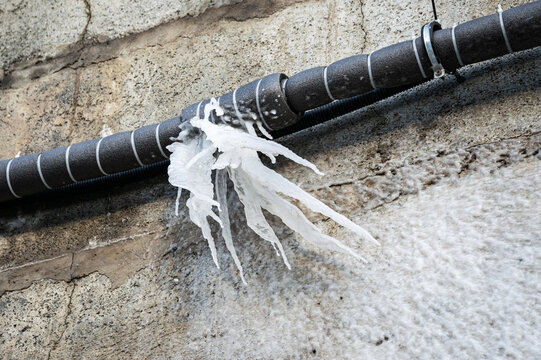How do you really feel about How To Avoid Freezing Pipes?

Winter can damage your plumbing, specifically by freezing pipes. Right here's just how to stop it from happening and what to do if it does.
Introduction
As temperatures drop, the risk of icy pipelines rises, potentially bring about expensive repairs and water damages. Recognizing exactly how to prevent icy pipes is vital for homeowners in cool environments.
Prevention Tips
Shielding susceptible pipes
Cover pipes in insulation sleeves or make use of heat tape to secure them from freezing temperature levels. Concentrate on pipes in unheated or external locations of the home.
Home heating strategies
Keep indoor spaces appropriately heated, particularly areas with pipes. Open up closet doors to permit cozy air to circulate around pipes under sinks.
How to identify frozen pipes
Search for decreased water flow from faucets, unusual smells or sounds from pipelines, and noticeable frost on subjected pipes.
Long-Term Solutions
Structural adjustments
Consider rerouting pipelines far from exterior walls or unheated locations. Include extra insulation to attics, cellars, and crawl spaces.
Upgrading insulation
Invest in high-quality insulation for pipelines, attics, and wall surfaces. Appropriate insulation helps keep regular temperatures and lowers the threat of icy pipelines.
Shielding Outside Pipes
Yard hose pipes and outdoor taps
Disconnect and drain garden tubes before winter season. Install frost-proof faucets or cover outside taps with protected caps.
Understanding Icy Pipes
What creates pipes to ice up?
Pipes ice up when exposed to temperature levels below 32 ° F (0 ° C) for extended periods. As water inside the pipelines freezes, it broadens, taxing the pipe wall surfaces and possibly causing them to rupture.
Threats and damages
Icy pipelines can lead to water system disturbances, home damages, and pricey fixings. Ruptured pipelines can flooding homes and trigger comprehensive structural damages.
Indications of Frozen Water Lines
Determining frozen pipelines early can avoid them from bursting.
What to Do If Your Pipelines Freeze
Immediate actions to take
If you presume frozen pipelines, keep taps open to eliminate pressure as the ice thaws. Use a hairdryer or towels soaked in warm water to thaw pipes gradually.
Verdict
Avoiding icy pipes needs aggressive measures and quick reactions. By recognizing the reasons, signs, and preventive measures, home owners can protect their pipes throughout cold weather.
5 Ways to Prevent Frozen Pipes
Drain Outdoor Faucets and Disconnect Hoses
First, close the shut-off valve that controls the flow of water in the pipe to your outdoor faucet. Then, head outside to disconnect and drain your hose and open the outdoor faucet to allow the water to completely drain out of the line. Turn off the faucet when done. Finally, head back to the shut-off valve and drain the remaining water inside the pipe into a bucket or container. Additionally, if you have a home irrigation system, you should consider hiring an expert to clear the system of water each year.
Insulate Pipes
One of the best and most cost-effective methods for preventing frozen water pipes is to wrap your pipes with insulation. This is especially important for areas in your home that aren’t exposed to heat, such as an attic. We suggest using foam sleeves, which can typically be found at your local hardware store.
Keep Heat Running at 65
Your pipes are located inside your walls, and the temperature there is much colder than the rest of the house. To prevent your pipes from freezing, The Insurance Information Institute suggests that you keep your home heated to at least 65 degrees, even when traveling. You may want to invest in smart devices that can keep an eye on the temperature in your home while you’re away.
Leave Water Dripping
Moving water — even a small trickle — can prevent ice from forming inside your pipes. When freezing temps are imminent, start a drip of water from all faucets that serve exposed pipes. Leaving a few faucets running will also help relieve pressure inside the pipes and help prevent a rupture if the water inside freezes.
Open Cupboard Doors
Warm your kitchen and bathroom pipes by opening cupboards and vanities. You should also leave your interior doors ajar to help warm air circulate evenly throughout your home.

I was guided to that report about How to prepare your home plumbing for winter weather from a buddy on another web blog. Do you know somebody who is enthusiastic about the subject? Do not hesitate to promote it. I treasure reading our article about Preventing and dealing with frozen pipes.
Click Here
Comments on “How to Protect Your Pipes from Cold Weather Damage: Important Advice”